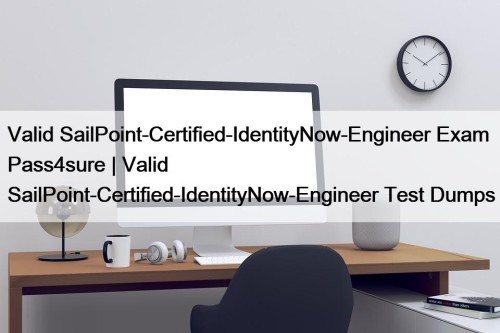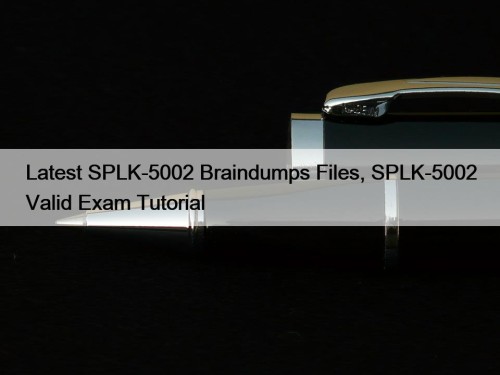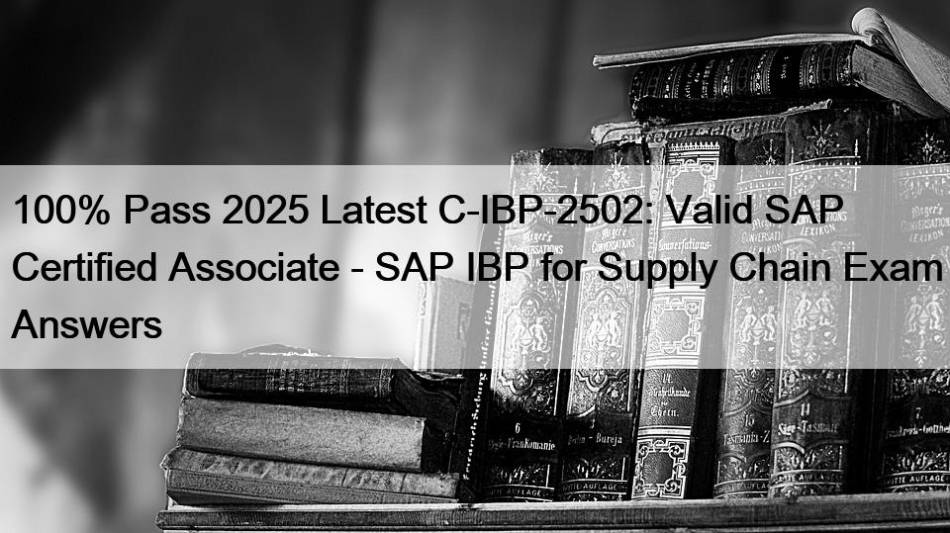Most Popular
 CIDQ IDFX Test Lab Questions & Exam IDFX Material
CIDQ IDFX Test Lab Questions & Exam IDFX Material
In order to help customers, who are willing to buy ...
 Valid SailPoint-Certified-IdentityNow-Engineer Exam Pass4sure | Valid SailPoint-Certified-IdentityNow-Engineer Test Dumps
Valid SailPoint-Certified-IdentityNow-Engineer Exam Pass4sure | Valid SailPoint-Certified-IdentityNow-Engineer Test Dumps
The result of your exam is directly related with the ...
 Latest SPLK-5002 Braindumps Files, SPLK-5002 Valid Exam Tutorial
Latest SPLK-5002 Braindumps Files, SPLK-5002 Valid Exam Tutorial
To achieve this objective the TestPassed is offering some important ...



100% Pass 2025 Latest C-IBP-2502: Valid SAP Certified Associate - SAP IBP for Supply Chain Exam Answers

Most people are nervous and anxious to take part in the C-IBP-2502 exam for the first time. Then it is easy for them to make mistakes. So it is important to get familiar with the real test environment. Also, the real test environment of the C-IBP-2502 Study Materials can help you control time. After all, you must submit your practice in limited time in C-IBP-2502 practice materials. Trust in our C-IBP-2502 training guide, and you will get success for sure.
SAP C-IBP-2502 Exam Syllabus Topics:
| Topic | Details |
|---|---|
| Topic 1 |
|
| Topic 2 |
|
| Topic 3 |
|
| Topic 4 |
|
| Topic 5 |
|
| Topic 6 |
|
>> Valid C-IBP-2502 Exam Answers <<
Pass Guaranteed 2025 Perfect SAP C-IBP-2502: Valid SAP Certified Associate - SAP IBP for Supply Chain Exam Answers
From the ITexamReview platform, you will get the perfect match C-IBP-2502 actual test for study. C-IBP-2502 practice download pdf are researched and produced by Professional Certification Experts who are constantly using industry experience to produce precise, and logical C-IBP-2502 Training Material. C-IBP-2502 study material is constantly begining revised and updated for relevance and accuracy. You will pass your real test with our accurate C-IBP-2502 practice questions and answers.
SAP Certified Associate - SAP IBP for Supply Chain Sample Questions (Q20-Q25):
NEW QUESTION # 20
You want to display and edit data in different Units of Measure (UOM). Which of the following must you consider before you use the UOM? Note: There are 3 correct answers to this question.
- A. Conversion to the target unit of measure is handled by the SAP IBP Excel add-in
- B. Units of measure are an attribute of a master data type, such as Product
- C. Units of measure are usually not time-dependent
- D. Analytics allow the user to select the target unit of measure
- E. Units of measure are usually not time-independent
Answer: B,C,D
Explanation:
Units of Measure (UOM) in SAP IBP allow data to be displayed and edited in different units (e.g., kg, lbs), configured via master data and UI settings, per SAP IBP's documentation.
* Option A: Analytics allow the user to select the target unit of measureThis is correct. Analytics apps (e.g., Advanced Dashboards) and Excel planning views let users choose the target UOM for display, leveraging conversion factors, per SAP IBP's visualization capabilities.
* Option B: Units of measure are usually not time-independentThis is incorrect. UOMs are typically static (time-independent) unless explicitly modeled as time-dependent (rare), making this a misstatement.
* Option C: Units of measure are an attribute of a master data type, such as ProductThis is correct.
UOM (e.g., Base UOM) is an attribute of the Product master data type, with conversion factors defined in UOM Conversion master data, per SAP IBP's setup.
* Option D: Units of measure are usually not time-dependentThis is correct. UOMs are generally static attributes, not varying by time unless custom-configured, aligning with SAP IBP's standard behavior.
* Option E: Conversion to the target unit of measure is handled by the SAP IBP Excel add-inThis is incorrect. While the Excel add-in displays converted values, the conversion logic is defined in the planning area (via UOM Conversion factors), not handled solely by the add-in.
Thus, A, C, and D are key considerations, per SAP IBP's official UOM handling.
NEW QUESTION # 21
Which of the following data can be tracked using a change-history-enabled key figure? Note: There are 3 correct answers to this question.
- A. Attributes
- B. Key figure type
- C. Modified code
- D. Scenario ID
- E. Reason code
Answer: A,C,E
Explanation:
Change-history-enabled key figures in SAP IBP track modifications to values, logging details for auditability, configured in the Planning Areas app. The tracked data is defined by SAP IBP's change history functionality, per official documentation.
* Option A: Scenario IDThis is incorrect. Scenario ID identifies the planning scenario, but it's not tracked in key figure change history; it's a context, not a change detail.
* Option B: Modified codeThis is correct. "Modified code" (likely intended as "modification code" or user ID) tracks who made the change, a standard field in SAP IBP's change log.
* Option C: AttributesThis is correct. Changed attribute values (e.g., Product ID, Location ID) tied to the key figure's planning level are tracked, per SAP IBP's documentation.
* Option D: Key figure typeThis is incorrect. Key figure type (e.g., stored, calculated) is a configuration setting, not a dynamic value tracked in change history.
* Option E: Reason codeThis is correct. Reason codes (e.g., manual adjustment justification) can be logged with changes, a feature in SAP IBP's Excel UI and change history, per official guides.
Thus, B, C, and E are tracked data elements, per SAP IBP's change history capabilities.
NEW QUESTION # 22
What are the possible Master Data Maintenance options for SAP Integrated Business Planning for Supply Chain? Note: There are 3 correct answers to this question.
- A. The Planning Areas Model Configuration app
- B. The Planner Workspaces app
- C. The Data Integration Jobs app
- D. The SAP IBP, add-in for Microsoft Excel
- E. The Manage Master Data app
Answer: C,D,E
Explanation:
Master data maintenance in SAP IBP involves creating and updating planning objects (e.g., Products, Locations), supported by specific tools, per SAP IBP's documentation.
* Option A: The SAP IBP, add-in for Microsoft ExcelThis is correct. The Excel add-in's "Manage Planning Objects" feature allows master data maintenance, per SAP IBP's UI capabilities.
* Option B: The Manage Master Data appThis is correct. This Fiori app is designed for direct master data management (e.g., editing Locations), per SAP IBP's documentation.
* Option C: The Planner Workspaces appThis is incorrect. Planner Workspaces is for planning and visualization, not master data maintenance.
* Option D: The Planning Areas Model Configuration appThis is incorrect. This app configures planning areas, not master data directly.
* Option E: The Data Integration Jobs appThis is correct. This app (formerly Data Integration) imports master data via files or integration, per SAP IBP's data management guides.
Thus, A, B, and E are maintenance options, per SAP IBP's official tools.
NEW QUESTION # 23
Manage Analytics Stories introduces advanced visualization features within SAP Integrated Business Planning for Supply Chain. What are some of the main capabilities of the stories? Note: There are 3 correct answers to this question.
- A. Specific chart and table filters can be applied within the story
- B. Stories must be re-created in each SAP IBP environment
- C. Links to external URLs can be embedded in the story
- D. The story is structured around one responsive page
Answer: A,B,C
Explanation:
The Manage Analytics Stories app in SAP IBP enables users to create interactive dashboards and visualizations. Its capabilities enhance decision-making by integrating data insights.
* Option A: Links to external URLs can be embedded in the storyThis is correct. Analytics Stories support embedding hyperlinks to external resources (e.g., documentation, websites), enhancing context, as per SAP IBP's visualization features.
* Option B: The story is structured around one responsive pageThis is incorrect. Stories can span multiple pages or tabs, not just one, allowing complex layouts. The responsive design adapts to devices, but it's not limited to a single page.
* Option C: Specific chart and table filters can be applied within the storyThis is correct. Users can apply filters to charts and tables (e.g., by Product, Time) within the story, enabling dynamic data exploration, a core capability in SAP IBP's analytics tools.
* Option D: Stories must be re-created in each SAP IBP environmentThis is correct. Analytics Stories are environment-specific (e.g., test vs. production) and cannot be transported directly. They must be recreated or exported/imported manually, per SAP IBP's architecture.
Thus, A, C, and D are main capabilities of Manage Analytics Stories, per SAP IBP's official documentation.
(Note: Original answer A, C, D matches corrected analysis.)
NEW QUESTION # 24
Which sourcing methods are required to identify the product flow through the network? Note: There are 3 correct answers to this question.
- A. Sourcing via Costs
- B. Customer Sourcing Rule
- C. Sourcing via Demand Prioritization
- D. Sourcing via Production
- E. Unspecified Sourcing
Answer: A,B,D
Explanation:
Sourcing methods in SAP IBP define how products flow through the supply chain network, configured via master data (e.g., Production Source, Transportation Lane).
* Option A: Sourcing via ProductionThis is correct. Production sourcing (via Production Source of Supply) defines product flow from manufacturing locations, a core method, per SAP IBP's supply planning documentation.
* Option B: Sourcing via Demand PrioritizationThis is incorrect. Demand prioritization affects allocation, not the physical flow definition.
* Option C: Unspecified SourcingThis is incorrect. "Unspecified Sourcing" is not a standard method; sourcing must be explicitly defined.
* Option D: Customer Sourcing RuleThis is correct. Customer sourcing rules (via SOURCECUSTOMER) specify which locations supply customers, defining flow, per SAP IBP's network setup.
* Option E: Sourcing via CostsThis is correct. Cost-based sourcing (e.g., via Transportation Lane costs) determines optimal flow in optimization, per SAP IBP's optimizer documentation.
Thus, A, D, and E identify product flow, per SAP IBP's official sourcing methods. (Note: Original had C typo; corrected to D.)
NEW QUESTION # 25
......
SAP study material is designed to enhance your personal ability and professional skills to solve the actual problem. C-IBP-2502 exam certification will be the most important one. There are many study material online for you to choose. While, the C-IBP-2502 exam dumps provided by ITexamReview site will be the best valid training material for you. C-IBP-2502 study pdf contains the questions which are all from the original question pool, together with verified answers. Besides, the explanations are very detail and helpful after the C-IBP-2502 questions where is needed. You can pass your test at first try with our C-IBP-2502 training pdf.
C-IBP-2502 Reliable Test Prep: https://www.itexamreview.com/C-IBP-2502-exam-dumps.html
- Valid C-IBP-2502 Exam Answers Exam Pass at Your First Attempt | SAP C-IBP-2502 Reliable Test Prep 🛌 Search for ( C-IBP-2502 ) and download it for free on ➡ www.prep4away.com ️⬅️ website 🖋Latest C-IBP-2502 Exam Labs
- New C-IBP-2502 Test Vce 🕙 Valid Braindumps C-IBP-2502 Sheet 🌀 C-IBP-2502 Test Cram Review 🧝 Search for ➤ C-IBP-2502 ⮘ and download it for free immediately on 「 www.pdfvce.com 」 🆒Detailed C-IBP-2502 Study Dumps
- C-IBP-2502 Exams Dumps 📼 C-IBP-2502 Valid Test Dumps ⛰ C-IBP-2502 Valid Exam Topics 💢 Search for 《 C-IBP-2502 》 and download it for free on ( www.lead1pass.com ) website ✨Latest C-IBP-2502 Exam Labs
- 100% Pass Quiz 2025 SAP C-IBP-2502 The Best Valid Exam Answers 💲 Download “ C-IBP-2502 ” for free by simply entering ➡ www.pdfvce.com ️⬅️ website 🦔C-IBP-2502 Test Cram Review
- Latest C-IBP-2502 Exam Labs 💦 C-IBP-2502 Latest Learning Material 🥼 C-IBP-2502 Test Questions Pdf 🚚 Open ✔ www.testsimulate.com ️✔️ enter 《 C-IBP-2502 》 and obtain a free download 🚥Reliable C-IBP-2502 Test Sims
- Latest C-IBP-2502 Exam Labs ❔ Valid Braindumps C-IBP-2502 Sheet 😆 C-IBP-2502 Valid Exam Format 👏 Search for “ C-IBP-2502 ” on ☀ www.pdfvce.com ️☀️ immediately to obtain a free download 🔓Latest C-IBP-2502 Exam Labs
- Actual SAP C-IBP-2502 Exam Dumps - Achieve Success In Exam 🗨 Search for ( C-IBP-2502 ) on ➥ www.torrentvce.com 🡄 immediately to obtain a free download 💓C-IBP-2502 Valid Test Dumps
- New C-IBP-2502 Test Vce ✴ C-IBP-2502 Valid Exam Online 🦩 Advanced C-IBP-2502 Testing Engine 🥒 Open ➽ www.pdfvce.com 🢪 enter 《 C-IBP-2502 》 and obtain a free download 🎿C-IBP-2502 Latest Learning Material
- We provide 100% premium SAP C-IBP-2502 exam questions 🥉 Search for ▷ C-IBP-2502 ◁ and download it for free immediately on ➤ www.pdfdumps.com ⮘ 🦀Latest C-IBP-2502 Exam Labs
- C-IBP-2502 Exams Dumps 📗 Detailed C-IBP-2502 Study Dumps 🏈 C-IBP-2502 Exams Dumps 🗻 Go to website 《 www.pdfvce.com 》 open and search for 「 C-IBP-2502 」 to download for free 🌝C-IBP-2502 Latest Learning Material
- C-IBP-2502 Test Questions Pdf 🙆 C-IBP-2502 Valid Test Dumps 💱 C-IBP-2502 Valid Exam Topics 🍯 Enter { www.getvalidtest.com } and search for 「 C-IBP-2502 」 to download for free 🔉C-IBP-2502 Test Questions Pdf
- C-IBP-2502 Exam Questions
- crypto-engineers.com gcpuniverse.com demo.droosak.com courses.coachwale.com.ng educonnect.asrdesigning.com ihomebldr.com huohuohd.com online.guardiansacademy.pk lms.ictschoolsl.com buonrecupero.com
Tags: Valid C-IBP-2502 Exam Answers, C-IBP-2502 Reliable Test Prep, Latest C-IBP-2502 Practice Questions, Answers C-IBP-2502 Real Questions, Test C-IBP-2502 Engine